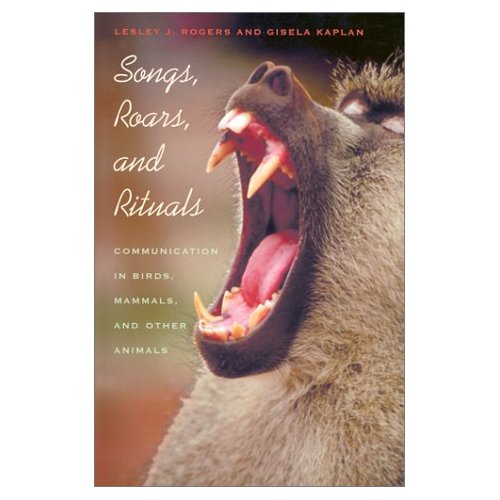Songs, Roars, and Rituals: Communication in Birds, Mammals, and Other Animals by Lesley J. Rogers and Gisela Kaplan
English | March 15, 2002 | ISBN: 0674008278 | 224 pages | PDF | 3,5 MB
English | March 15, 2002 | ISBN: 0674008278 | 224 pages | PDF | 3,5 MB
From the cat's meow to the bowerbird's bright-blue nest, animals constantly and variously exchange information. Avians, primates, seals, whales, even insects and lizards send signals in order to find and keep their mates; to deceive predators, or to warn them away; to mark their territories; to train their young; and to pass on useful information. Neurobiologist Rogers (Minds of Their Own) and social scientist Kaplan (also the author of books on Australian feminism) have written an accessible, consistently absorbing and scientifically scrupulous survey of how animals send signals and of what evolutionary theory tells us about how they came to do so.
The authors first explain how biologists distinguish between intentional signaling and other behaviors, such as "intention movements" (e.g., a bird flapping its wings before takeoff). Bird songs have inspired their own flock of specialized research; much of this volume covers warblers' warbles, lyrebirds' melodies and finches' trills. We learn why certain acoustic properties suit certain calls (staccato chirps, for example, make birds easier to locate), and we find out how various species teach their young their own calls, signs and songsAsome calls are largely "learned," others seem to be genetically programmed in much more detail. Mammal calls have proven harder to study, but Rogers and Kaplan explain what we do know. A concluding chapter describes how humans communicate with animals: pet owners and tribal hunter-gatherers both get sympathetic attention. An earlier version of this work was published in England in 1998 as Not Only Roars and Rituals; this revised American edition follows the May publication of the authors' other collaborative survey, The Orangutans (Forecasts, May 22). 8 halftones, 14 line illus. (Sept.)



